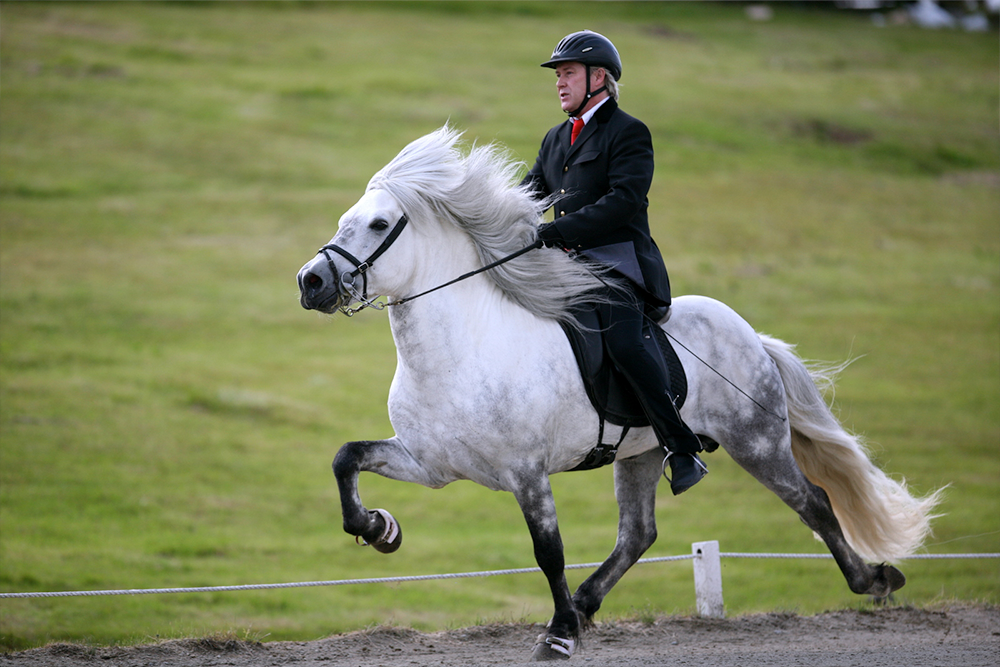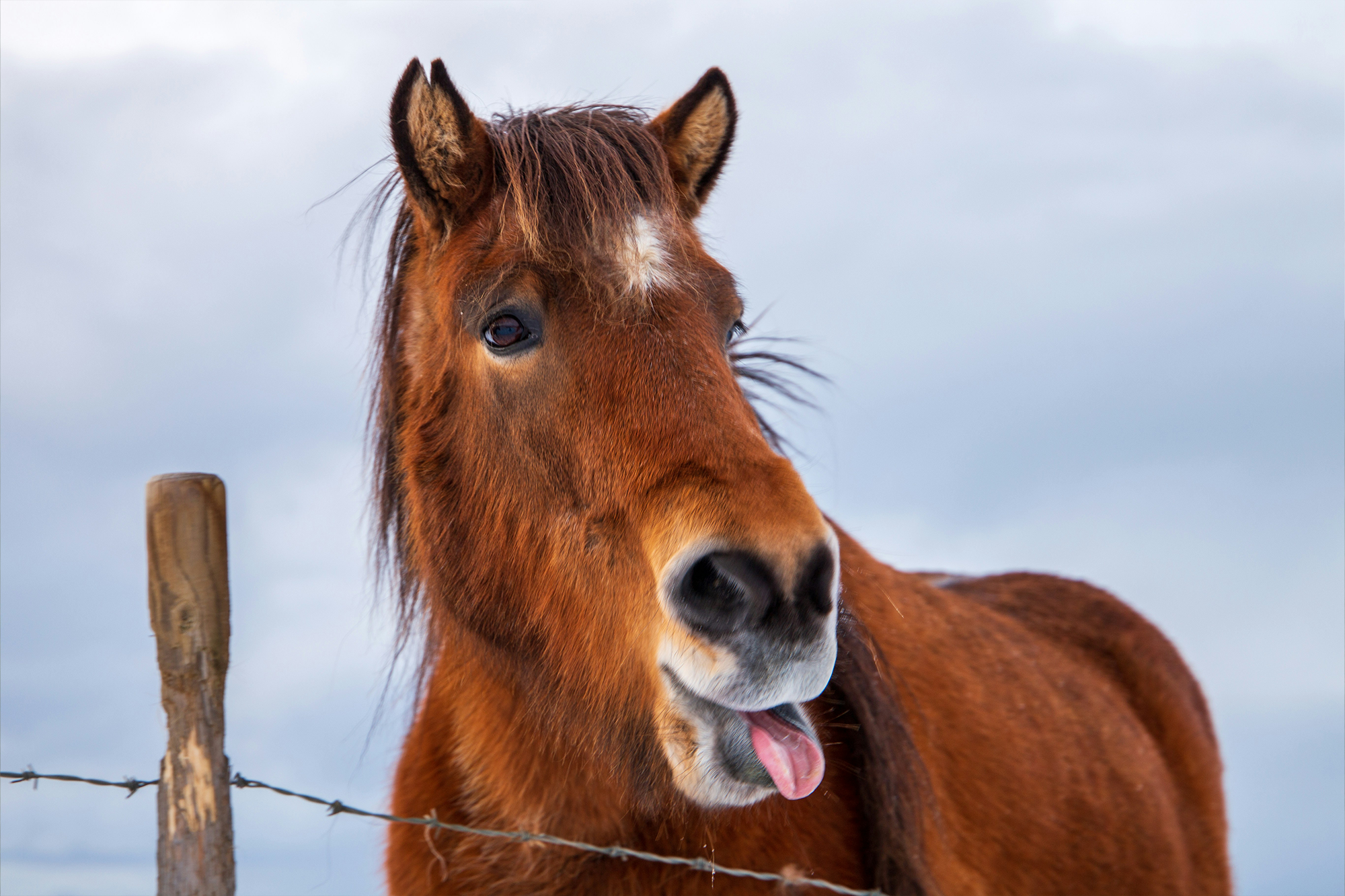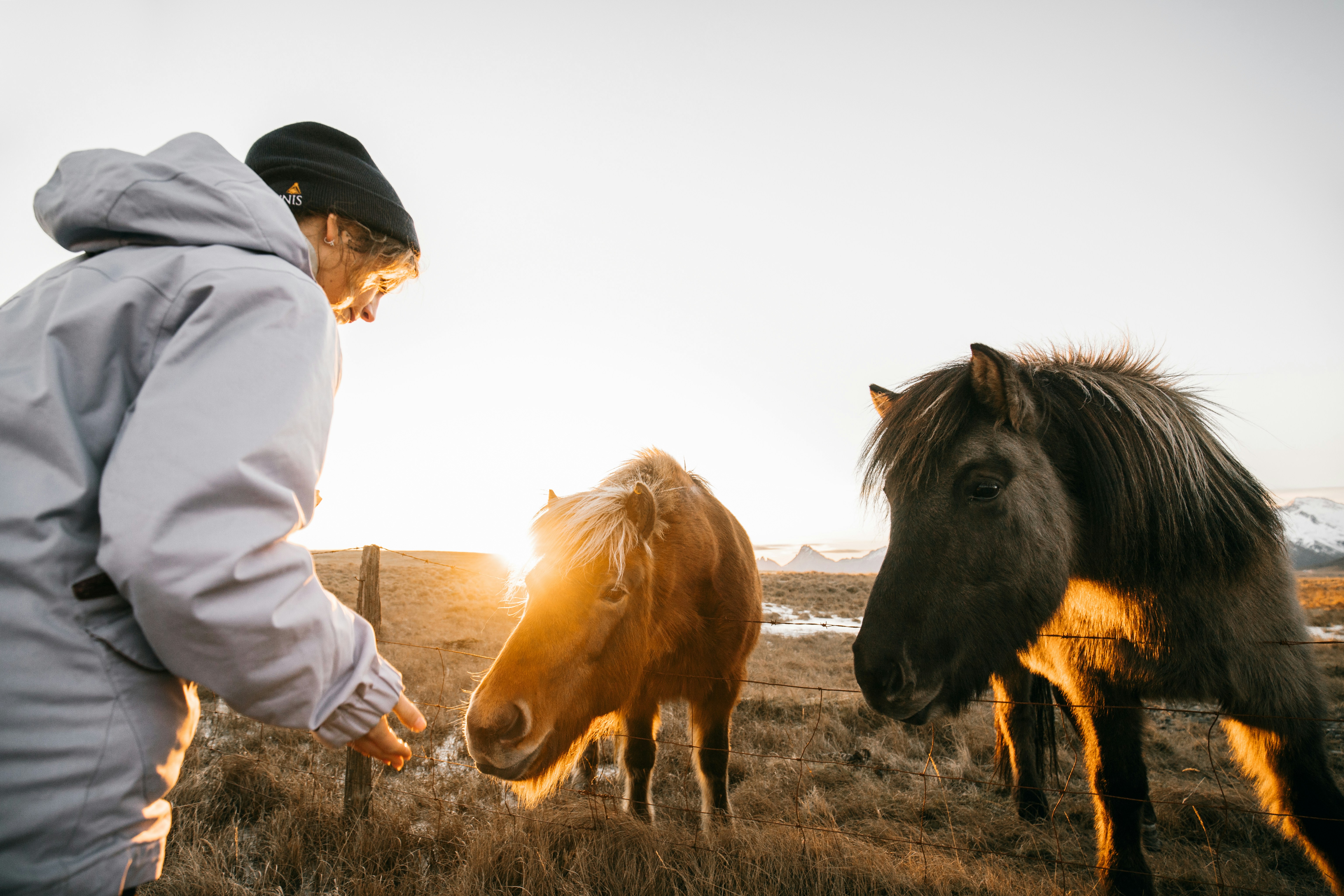


3.4 Iceland
Background
There is only one horse breed in Iceland – the Icelandic horse (íslenski hesturinn). It is believed that the breed was established based on horses brought to Iceland during the settlement 1.100 years ago. For centuries the horse was the primary means of transportation in Iceland. The harsh weather conditions have without a doubt shaped the stock significantly.
The Icelandic horse has served well as a draft horse since the 1800 and was bred as such until the mid-1900s. The invention and use of tractors led to a considerable decline in the horse population. Organized breeding programmes were established in Iceland in the early 1900s when coordinated horse shows were initiated. Today, the breed has become a highly popular riding and gait competition horse, and selection is based on defined breeding goals. The smooth gait, tölt, has become a well-known quality symbol of the Icelandic horse and greatly contributes to its popularity worldwide.
Organization and registration of horse breeding in the Nordic countries
The Ministry of Food, Agriculture and Fisheries, Icelandic Food and Veterinary Authority has supervision of horse welfare according to Laws and Regulations. The Agricultural Advisory Center and Council in horse breeding advise on breeding. The Icelandic Equestrian Association (Landsamband hestamannafélaga) organize sporting competitions and supports the local horse clubs. Horse breeding is regulated by Act on animal welfare no. 55/2013, Regulation on horse welfare no. 910/2014 and Regulation on Origin and breeding of Icelandic horses no. 442/2011. EU passports are issued by the Agricultural Advisory Center.
WorldFengur is the studbook of Origin of the Icelandic horse since 2001. The WorldFengur is a web database program that was established by the Icelandic Farmer Association in cooperation with FEIF (International Federation of Icelandic Horse Association). It provides information on individual horses, pedigree, assessment on conformation and rideability at Breeding Field Tests, genetic evaluation (BLUP), colours, photos, videos and more. Icelandic horses are bred in many countries around the world and WorldFengur is available in ten different languages.
Population statistics
Records show that the population of the Icelandic horse has fluctuated quite dramatically. The most dramatic decline in the population size was during the Laki volcanic eruption in 1783-84, when the number of horses reduced from 33 000 to 8500. Fifty years later, in 1835, the population had grown to 36,000 individuals.
According to WorldFengur, the number of horses in Iceland was 92 000 in 2024, and the number of registered horses globally was 215 000. The countries with the highest number of registered Icelandic horses outside of Iceland is Germany (73 000), Denmark (46 000) and Sweden (37 000). However, there might be more horses worldwide of full Icelandic descent, that are not registered in the database.
Based on the DAD-IS database, which was last updated in 2023, the overall population size in Iceland has fluctuated between 24 730 and 96 000 individuals over the registration period 1986-2023 (Figure 5A). There are some discrepancies between the numbers from WorldFengur and DAD-IS in terms of the total population of horses in Iceland. There are also some high fluctuations in the numbers between 2015-2020, which looks more like data entry errors than actual population fluctuations. The reason for this is unknown. According to DAD-IS The number of Icelandic mares has increased from 25 000 to 27 822 since the registration began in 1986 (Figure 5B). The number of breeding stallions has also increased from 400 to 1481. The highest number of breeding stallions (7000 individuals) was, however, registered between 2015-16.
Figure 5.A: Population statistics of the Icelandic horse based on DAD-IS (2023).
The figure illustrates the population number from 1986 to 2019.
The figure illustrates the population number from 1986 to 2019.
Figure 5.B: Population statistics of the Icelandic horse based on DAD-IS (2023).
The figure illustrates the the number of available breeding mares from 1986 to 2019.
The figure illustrates the the number of available breeding mares from 1986 to 2019.
Commercial horse and breeding activities
The Icelandic horse is the only horse breed in Iceland, and legislation prohibits the import of other breeds onto the island. It is both the native breed and a commercial breed in Iceland. In recent decades the popularity of the Icelandic horse has increased steadily, and export of riding horses has become an industry. The Icelandic horse can be found in most parts of the world and the International Federation of Icelandic Horse Associations (FEIF) has 26 countries as members.
There are commercial activities with tourism riding, personal riding and owning, breeding and education with Icelandic horses.
Economy
The export of riding horses provides and income for breeders of Icelandic horses, in addition to tourism riding and other Icelandic horse related activities, the horse sector is providing a positive effect on the Icelandic economy. The Icelandic horse is a good example of how to commercialize a native breed with unique traits: i.e., the initiation of competitions using the unique gaits of the Icelandic horse, has promoted the interest for this native horse globally
Native breeds and conservation programs
The Farmers Association of Iceland (FAIC) and The Horse Breeding Association of Iceland (FHB) are responsible for the breeding work and set the official breeding goals covering health, fertility, colour variability, character, conformation, and riding ability. The BLUP method with animal model has been used for genetic evaluation of the Icelandic horse since 1986. The most important aspects of the implementation of the breeding programme using the BLUP system is field tests and coordinated judgement of horses.
Gene banking activities
Artificial insemination and embryo transfers have been used to a small extent in the most recent past. There are, however, no national conservation program or cryo/gene bank for the Icelandic horse.
Subsidies
There are no subsidies for horse breeding in Iceland.